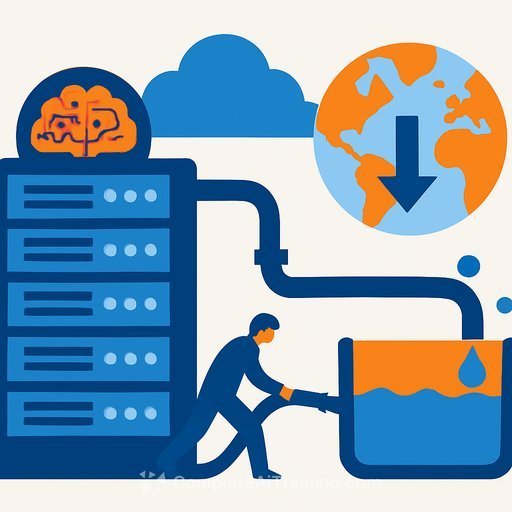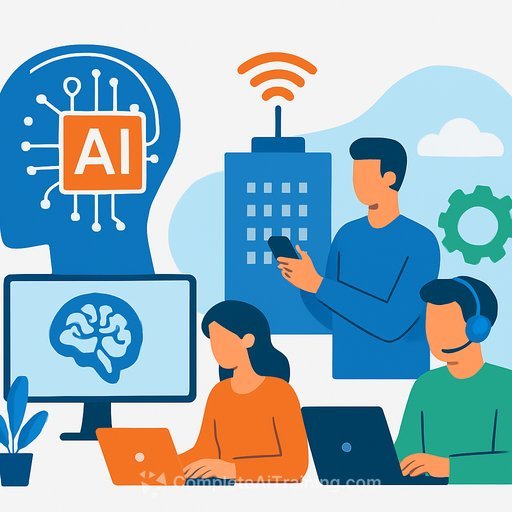The Synergy of Artificial Intelligence and Cloud Computing in APAC
Artificial intelligence (AI) and cloud computing are closely linked, transforming industries across the Asia Pacific (APAC) region. Cloud providers were among the first to apply AI to improve their services. AI excels at making decisions within IT systems, enabling automation of operations in large data centres.
For example, AI helps cloud providers to scale services, detect errors, monitor cyber threats, and identify fraud across various applications. This foundation is now being used by APAC cloud providers to redefine their service ecosystems.
Huawei Cloud has placed AI at the core of its regional strategy. Sunny Shang, president of Huawei Cloud Asia Pacific, highlights that the company integrates AI-native features directly into its cloud offerings, aiming to enhance both internal operations and customer solutions.
Adoption Hurdles in APAC
Despite progress, many organisations in APAC face challenges in adopting AI, especially related to infrastructure and data availability. Shang points out that the scarcity of high-quality industry data is a major obstacle. Effective AI training depends on access to extensive, reliable data gathered over time.
China, with its comprehensive industrial sectors and large consumer base, serves as an example where data availability supports AI development. To push AI forward, companies must focus on data integration, governance, processing, and exchange capabilities.
Another barrier is the high technical requirement for building compute resource pools. According to Shang, ensuring access to these resources is critical for AI growth. Two approaches can help:
- Governments establishing large-scale AI computing centres to support industries.
- Deploying AI on public clouds, which offers an accessible and cost-effective option for compute resources.
Generative AI: Experimental or Practical?
Generative AI presents a more immediate opportunity despite ongoing infrastructure and data challenges. While most AI applications currently target consumers, integrating AI into enterprise systems is progressing steadily.
In public services, AI models help understand user intentions and facilitate interactions through advanced dialogue systems. In manufacturing, AI automates tasks such as scrap steel grading and coal blending by learning from large datasets.
The finance sector benefits from AI-powered smart customer service that autonomously manages client inquiries and procedures. These examples demonstrate that applying AI in industries is both necessary and achievable.
Balancing Act
As AI integrates deeper into business operations, concerns about ethics, privacy, and security vulnerabilities arise. A recent F5 report highlights that while consumers see AI’s benefits, they remain cautious about security risks and ethical implications.
Companies in APAC are working to balance innovation with responsible AI and data governance. Shang stresses that widespread AI use introduces risks such as prompt injections, information leaks, and content compliance issues.
To address this, organisations need comprehensive security systems tailored for AI. This includes advanced technical safeguards beyond traditional cybersecurity measures, such as:
- Preventing prompt injection attacks.
- Detecting sensitive information leaks.
- Filtering non-compliant content.
- Verifying content authenticity.
Additionally, companies must design organisational frameworks that align talent, governance, and processes with AI advancements.
Scaling AI Through the Cloud
Meeting AI’s technical and ethical demands requires scale—not just in infrastructure but also in partnerships, skill development, and shared innovation. Shang advises organisations beginning their AI journey in APAC to select cloud platforms with integrated AI capabilities.
Collaboration with ecosystem partners is essential for co-developing industry-specific solutions. At the Huawei Cloud APAC Partner Summit 2025, Shang emphasized that partners drive sustainable growth.
He also encourages using training and competence centres to build foundational AI skills before scaling efforts. For practical AI training resources, organisations can explore Complete AI Training.
Conclusion
The growth of AI and cloud computing in APAC is shaping how enterprises operate. Success depends not just on adopting technology quickly or at scale, but on thoughtful deployment that improves operations, reduces workforce burden, and supports transformation.
Your membership also unlocks:






